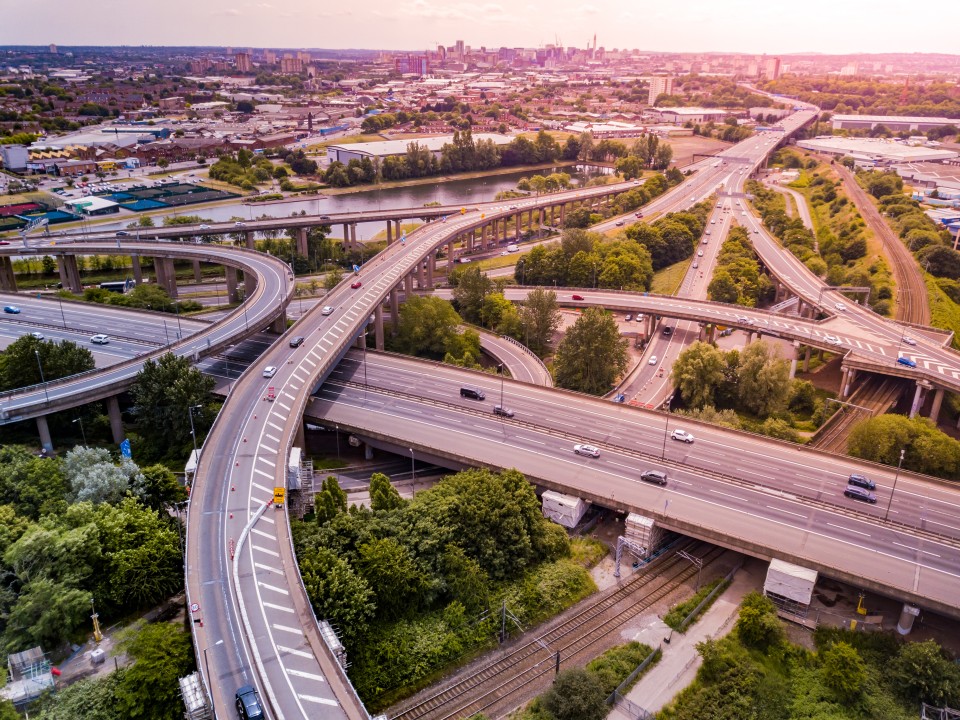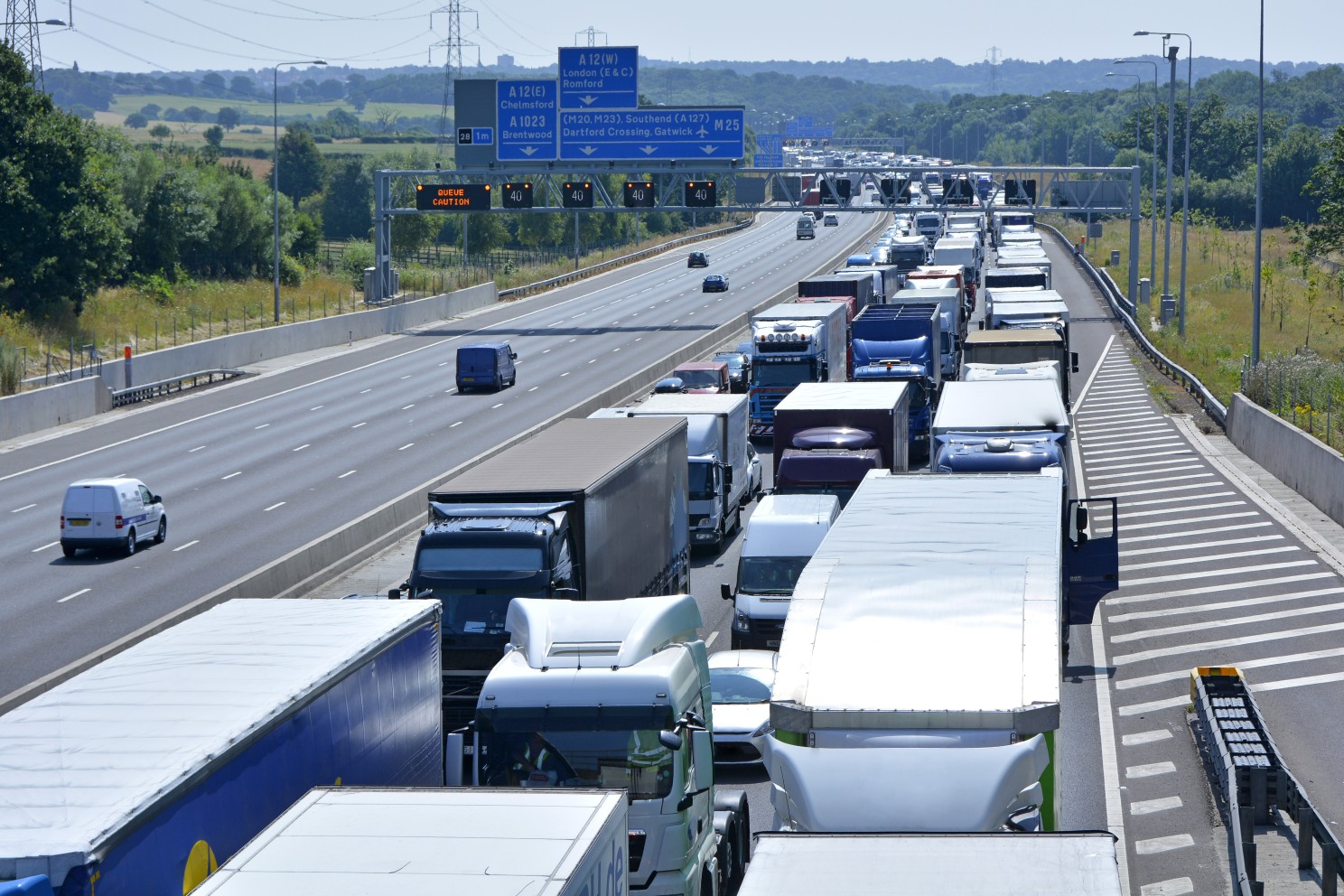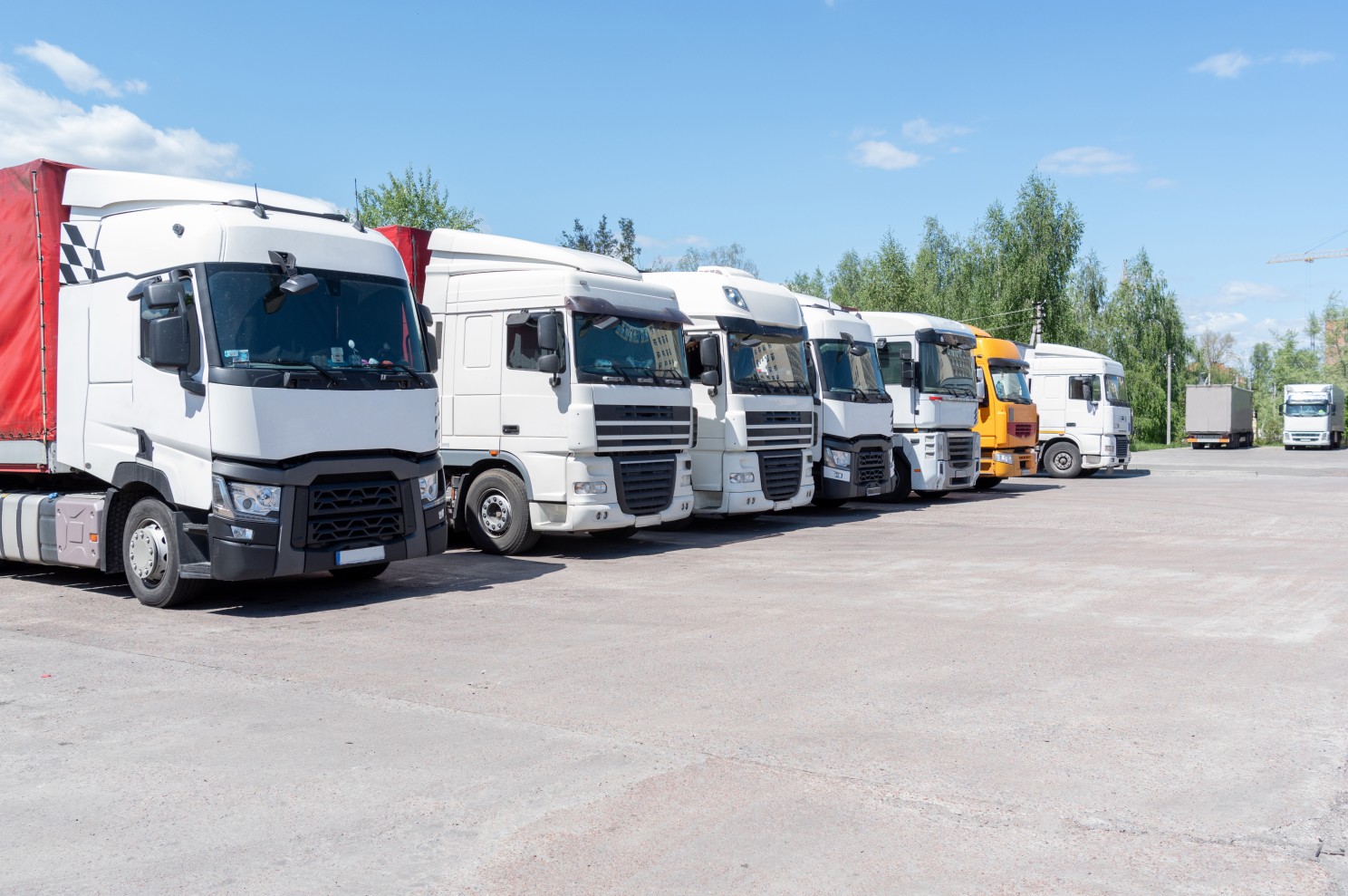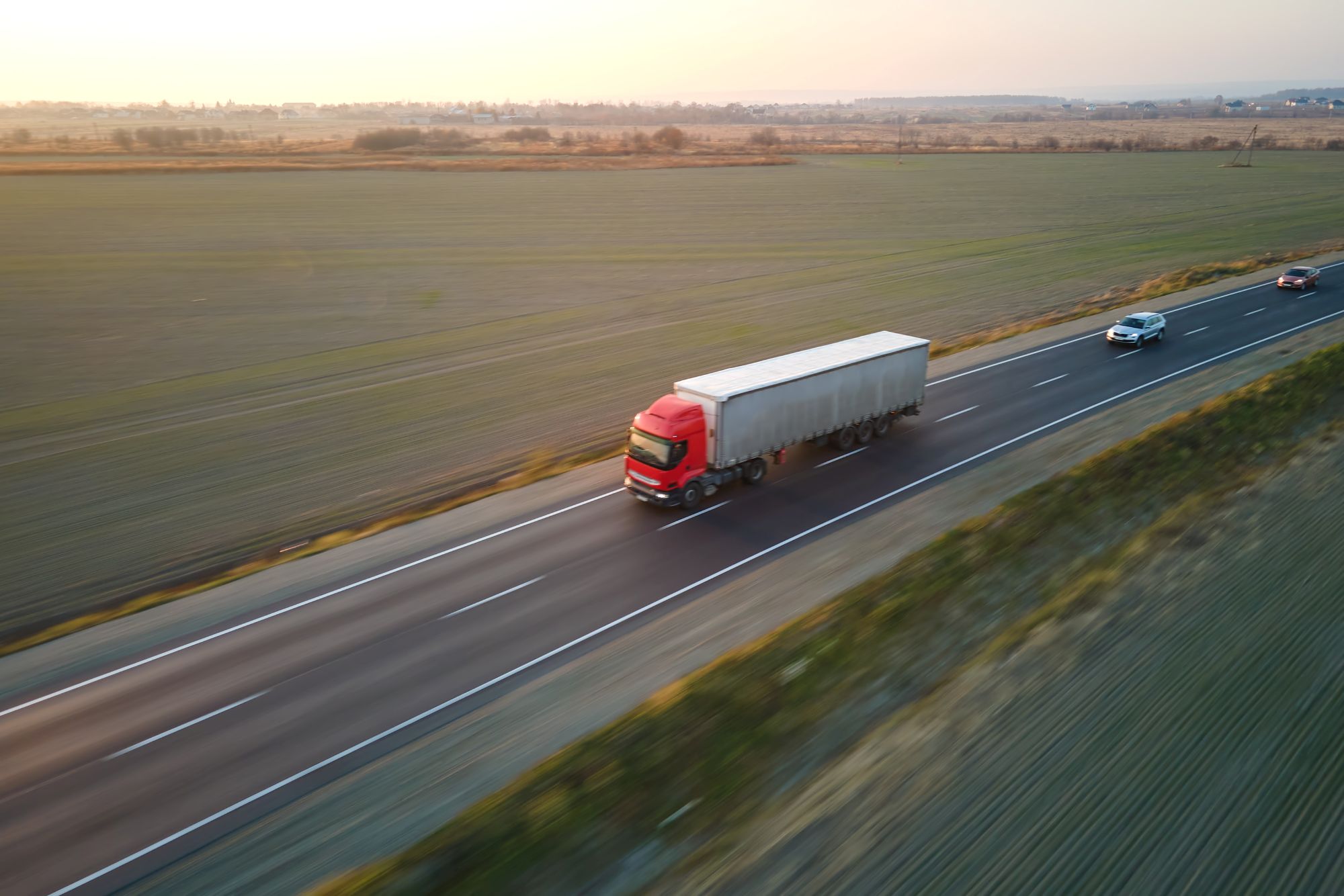
Susie Jones
Netzwerk Nord: Welchen Nutzen haben die Lkw-Fahrer davon?
Erstellt: 12.08.2024
•
Aktualisiert: 12.08.2024
Anfang Oktober kündigte die Regierung ihren Plan an, HS2 zu streichen und die Mittel für die Verbesserung der Verkehrsinfrastruktur des Landes umzuleiten - ein Projekt, das als Network North bekannt ist. Das Projekt wird 36 Milliarden Pfund für die Verbesserung von Hauptverkehrsstraßen bereitstellen, die für die Fahrer zu einem Stein des Anstoßes geworden sind. Die Ankündigung hat viele überrascht, aber was bedeutet das für die Lkw-Fahrer, die diese Straßen endlos überqueren müssen?
Bestehende Straßenausbauprogramme
Die Regierung wird die Mittel für die meisten bestehenden großen Straßennetze und großen lokalen Straßenbauprojekte erhöhen. Diese Vorhaben werden nicht mehr zu 85 %, sondern zu 100 % bezuschusst, um sicherzustellen, dass sie realisiert werden. Eine Liste der Straßenverbesserungsmaßnahmen ist auf gov.co.uk verfügbar. Die zusätzlichen Mittel für diese Vorhaben werden die Effizienz der Straßen im ganzen Land verbessern.
Strategische Straßennetzpläne
Das strategische Straßennetz zielt darauf ab, Staus zu verringern und denjenigen, die häufig auf den Straßen unterwegs sind, eine reibungslosere Fahrt zu ermöglichen. Ein willkommener Fortschritt für Lkw-Fahrer, für die das Stehenbleiben im Stau zur Norm geworden ist.

Der Norden
Anschlussstelle 15 der M6 - Als einer der verkehrsreichsten Straßenabschnitte im Vereinigten Königreich, der täglich von über [127.000] (https://nationalhighways.co.uk/our-roads/west-midlands/m6-junction-13-to-junction-15-smart-motorway/) Fahrzeugen befahren wird, leidet er seit langem unter starken Staus und unvorhersehbaren Fahrzeiten. Die engen Kurven auf der Autobahnauffahrt haben sich für Lkw-Fahrer als schwierig erwiesen - sie führten zu Überschlägen und erhöhten Verkehrsverzögerungen. Die versprochenen Änderungen sollen die Verkehrsüberlastung verringern und die Sicherheit der Kreuzung verbessern.
Zwei Projekte im Nordwest-Quadranten von Manchester - Die M60 wird täglich von Pendlern und Fernfahrern befahren 180.00. Die Projekte des Nordwest-Quadranten zielen darauf ab, die Anschlussstellen J12-J18 zu umgehen und die Anschlussstellen 12, 13 und 14 umzugestalten. Weitere Ergänzungen, wie eine Verbindungsstraße zur A57 und Kapazitätsverbesserungen an den Anschlussstellen neun, zehn, siebzehn und achtzehn, werden die Verkehrsüberlastung und die Fahrzeiten verbessern.
A1 zwischen Morpeth und Ellingham - Die 12,8 Meilen lange Strecke wurde seit ihrem Vorschlag von Verzögerungen beim Ausbau geplagt. Das Projekt Network North zielt jedoch darauf ab, die Entwicklung durch die Verbreiterung des Straßenabschnitts in Gang zu bringen und so die Fahrzeit, die Sicherheit und die Belastbarkeit zu verbessern.
Midlands
Engpässe auf der A5 zwischen Hinckley und Tamworth - Obwohl weitere Einzelheiten noch nicht bekannt gegeben wurden, wurde angedeutet, dass die Entlastung von Verkehrsstaus ein wichtiger Bestandteil der Pläne sein wird.
Verbesserung des A50/A500-Korridors zwischen Stoke und Derby - Mit Durchschnittsgeschwindigkeiten von unter 20 km/h in der Hauptverkehrszeit hat sich diese Strecke als langsam und unzuverlässig für Lkw-Fahrer und Pendler erwiesen. Das Vorhaben von Network North wird dies voraussichtlich tun:
Schaffung von 17.760 neuen Arbeitsplätzen bis 2061
Siehe 21.538 Bevölkerungszuwachs in dem Gebiet bis 2061
Erleben Sie einen Anstieg der BWS (Bruttowertschöpfung) um [12,04 Mrd. £] (https://www.midlandsconnect.uk/projects/roads/a50a500-corridor/) in den nächsten 60 Jahren.
Südosten
- A2 Brenley Corner - Bekannt als die am meisten überlastete Kreuzung in Kent, verspricht Network North, in diesen Bereich zu investieren - eine gute Nachricht für Lkw-Fahrer, die nach Dover fahren. Weitere Einzelheiten zu den Entwicklungsplänen sind noch nicht bekannt. Pläne zur Verbesserung von Brenley Corner werden jedoch bereits seit 2021 diskutiert.
Schottland
- Ausbau der A75 zwischen Gretna und Stranraer - Die A57 muss dringend ausgebaut werden, da für Lkw-Fahrer derzeit eine Geschwindigkeitsbegrenzung von 40 km/h gilt, was zu Staus und langen Verzögerungen führt. Da es sich um eine wichtige Fährverbindung zwischen Nordirland und Großbritannien handelt, werden Lkw-Fahrer, die diese Verbindung nutzen, stark von dem Projekt profitieren.

Eine verbesserte Straßeninfrastruktur wird Staus abbauen und den Lkw-Fahrern wertvolle Zeit und Kraftstoffkosten sparen, was zu schnelleren Lieferzeiten beiträgt. Das Programm von Network North soll das Leben von Lkw-Fahrern und anderen Verkehrsteilnehmern verbessern, indem es die Sicherheit erhöht und die Effizienz steigert.
Wie viele Personen bestehen ihre Lkw-Prüfung beim ersten Mal?
Einem Bericht von Statista zufolge lag die durchschnittliche Bestehensquote bei der praktischen Prüfung für einen Lkw zwischen 2007 und 2021 bei etwa 50 %. Daten von gov.co.uk zeigen, dass im Zeitraum 2022-2023 75,9 % der Männer im Vereinigten Königreich ihre LGV-Prüfung bestanden haben, verglichen mit 75,9 % der Frauen, die bestanden haben.
Ist Lkw-Fahren stressig?
Wie bei jedem Beruf sind einige Aspekte stressig. Die lange Abwesenheit von Angehörigen kann bei vielen Fahrern zu Einsamkeit und Isolation führen. Außerdem ist Lkw-Fahren ein Job, der manchmal unter hohem Druck steht - mit engen Lieferfristen und unvorhersehbaren Wetterbedingungen.



